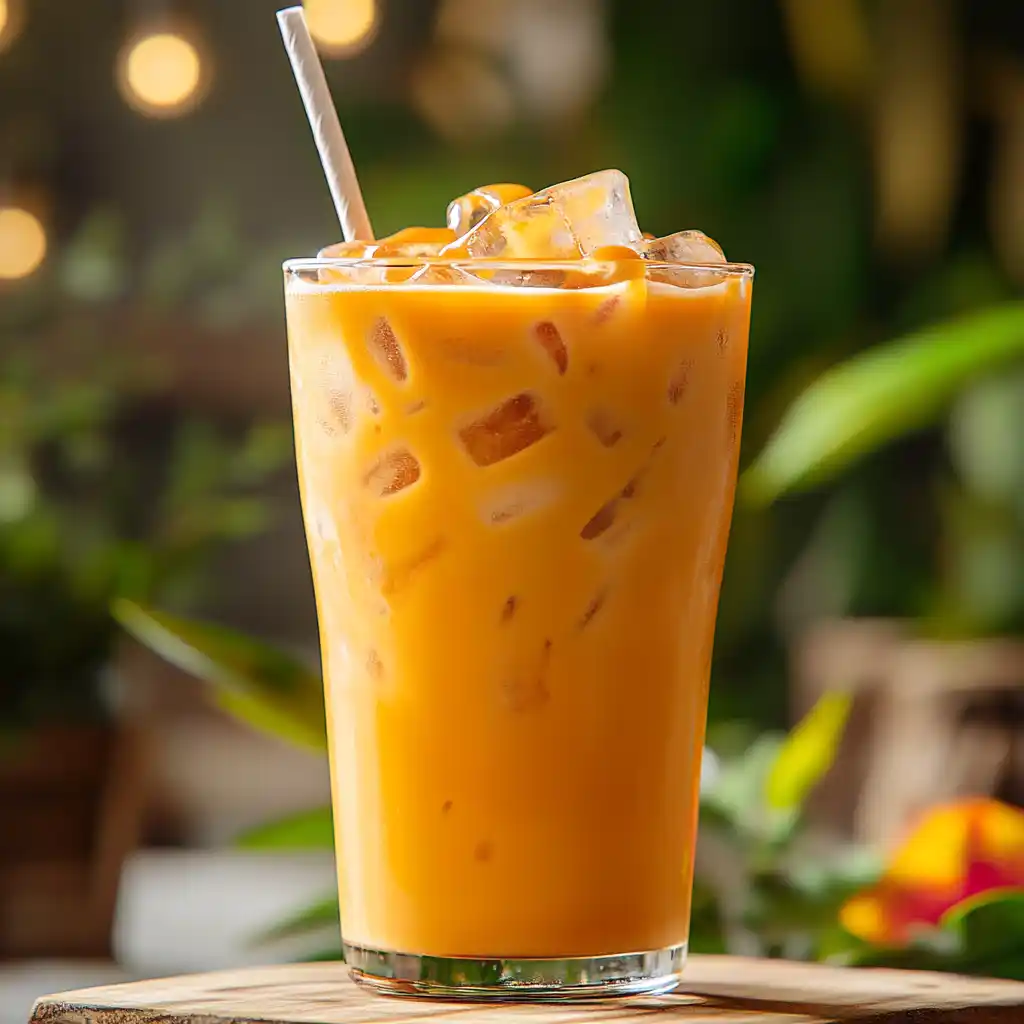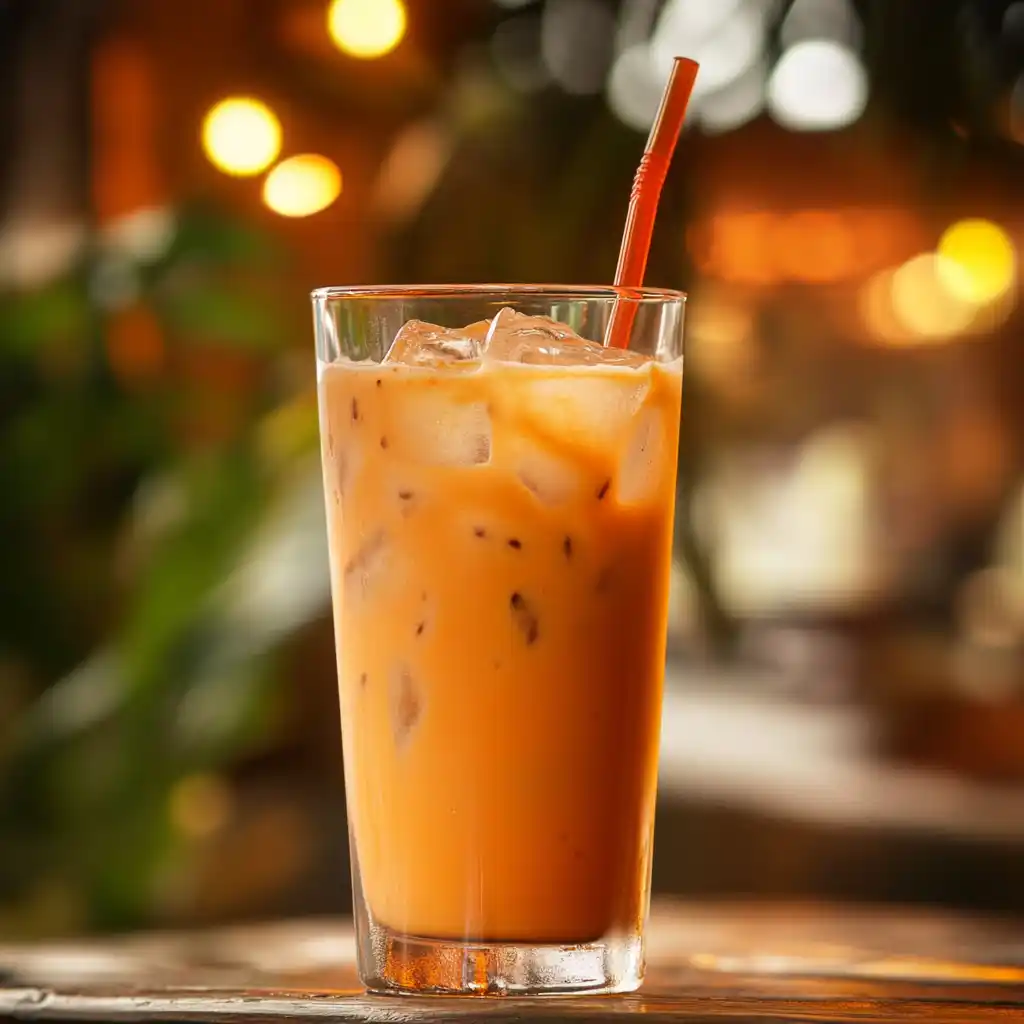Introduction:
Thai tea has captivated the taste buds of many tea enthusiasts around the world with its unique flavor and vibrant orange color. Originating from Thailand, this sweet, creamy beverage is often served iced, making it a refreshing treat in hot weather. But what makes This so special, and is it good for your health? In this article, we will explore everything you need to know about this, from its ingredients to its potential health benefits and concerns. Whether you’re a frequent this drinker or considering trying it for the first time, this guide will answer all your burning questions.
Table of Contents
Understanding Thai Tea and Its Ingredients
What Kind of Tea Is Used in Thai Tea?
This, also known as “Cha Yen,” is a blend of black tea leaves, often mixed with spices and sweeteners. The most common type of tea used is a strong, bold black tea, sometimes infused with ingredients like star anise, tamarind, and orange blossom water. The tea is brewed to create a strong base, which gives this its distinctive flavor profile.
How Thai Tea Is Prepared
To prepare this, the black tea leaves are boiled and then mixed with sweetened condensed milk and regular milk or cream. The result is a rich, creamy drink with a deep orange hue. The unique preparation process is key to delivering the full, decadent flavor that defines this.
What Makes Thai Tea So Orange?
The Role of Food Coloring in Thai Tea
One of the most striking features of Thai tea is its vibrant orange color. While the color of the tea can come from the specific variety of tea leaves used, many commercial versions of this are also made with added food coloring. The use of artificial dyes, like Red 40, is a common practice in this mixes to achieve that signature bold hue.
How to Make Thai Tea at Home Without Food Coloring
If you want to enjoy the authentic flavor of this without artificial food coloring, you can brew your tea with a strong, high-quality black tea like Ceylon or Assam. These varieties can provide a naturally rich color, though it may not be as intense as the commercial versions.
Is Thai Tea Good or Bad for You?
Potential Health Benefits of Thai Tea
this contains antioxidants from the black tea leaves, which can help combat free radicals and promote overall health. The addition of spices like star anise and tamarind also brings their own health benefits, such as digestive support and anti-inflammatory properties.
The Downsides of Drinking Thai Tea
While this offers some health benefits, it can be quite high in sugar due to the sweetened condensed milk and sugar added during preparation. Drinking it in excess can lead to weight gain, blood sugar spikes, and other health issues. Moderation is key when it comes to enjoying this delightful drink.

Thai Tea
Equipment
- Small Pot – For boiling water and steeping the tea.
- Strainer To strain the tea leaves after brewing.
- Spoon or Stirrer For mixing the tea, sugar, and milk.
- Measuring spoons To accurately measure the loose tea and sugar.
- Glass or Cup To serve the Thai Tea.
- Ice Cube Tray If serving iced Thai Tea, you'll need ice cubes.
Ingredients
- 2 tablespoons loose leaf black tea Ceylon or Assam
- 2 tablespoons sugar adjust to taste
- 1 cup water
- 2 tablespoons sweetened condensed milk
- 1 tablespoon regular milk or coconut milk
- Ice cubes optional
Instructions
- Bring water to a boil in a small pot.
- Add the loose tea leaves and sugar to the boiling water.
- Stir the mixture and let it steep for about 5 minutes.
- Strain the tea to remove the leaves, and let the tea cool to room temperature.
- Add sweetened condensed milk and stir well until fully combined.
- Add regular milk or coconut milk and stir.
- Pour the tea over ice and enjoy!
Notes
For a dairy-free version, use coconut milk instead of regular milk.
You can also add a pinch of spices such as star anise or tamarind for a more authentic flavor.
Nutrition
Why Does My Stomach Hurt After Drinking Thai Tea?
The Effects of Dairy and Sugar on Your Stomach
One common reason people experience stomach discomfort after drinking This is due to the dairy content. this is typically made with sweetened condensed milk, which can be hard to digest for those who are lactose intolerant. The high sugar content can also cause bloating or upset stomach, especially for people with sensitive digestive systems.
Other Possible Causes of Stomach Discomfort
In addition to dairy and sugar, some people may have sensitivity to the spices used in this, such as tamarind or anise. These ingredients, while flavorful, could cause mild digestive issues in some individuals. If you find yourself frequently experiencing stomach discomfort after drinking This, consider reducing the amount of sugar or opting for a dairy-free version.
How to Make Thai Tea at Home
Easy Recipe for Homemade Thai Tea
Making this at home is simple and allows you to control the sweetness and ingredients. To make your own, steep black tea leaves (or a pre-made This mix) in hot water, then add sweetened condensed milk and regular milk (or coconut milk for a dairy-free option). Serve it over ice and enjoy!
Customizing Your Thai Tea
You can adjust the sweetness level by adding more or less sweetened condensed milk, or switch to a sugar substitute if you prefer. For a more authentic taste, add a pinch of spices like star anise or crushed cardamom to your tea mix.
Thai Tea vs. Other Tea Variants
How Does Thai Tea Compare to Bubble Tea?
While both this and bubble tea are sweet, creamy beverages, they differ in their preparation and ingredients. Bubble tea, often served with tapioca pearls, has a chewy texture, whereas This is typically served without any add-ins. This strong, spiced flavor is another point of difference from the more subtle flavors found in bubble tea.
The Difference Between Thai Iced Tea and Regular Iced Tea
Regular iced tea is typically made from black or green tea, served cold with or without sweeteners. Thai iced tea, on the other hand, is richer and sweeter, with the addition of milk (dairy or non-dairy) and condensed milk. The flavor profile of Thai iced tea is more complex, often featuring spices like star anise or cinnamon.
The Cultural Significance of Thai Tea
Thai Tea in Thai Culture
In Thailand, this is not just a drink, but a cultural experience. It is often served in restaurants and street vendors across the country. This plays an important role in hospitality and is deeply tied to the social fabric of the nation, being enjoyed by people of all ages and backgrounds.
For more beverage recipes, check out our natural Mounjaro recipe.
Thai Tea in International Popularity
Beyond Thailand, this has found a dedicated following in many countries, especially in the U.S., where it’s commonly served in Thai restaurants. The unique flavor and visually striking orange color have made it a favorite among tea drinkers and coffee enthusiasts alike.
Want more drink ideas? Take a look at our Zepbound drink recipe for inspiration.
FAQs:
What Kind of Tea Is in Thai Tea?
this is typically made with strong black tea varieties like Ceylon or Assam, and often includes additional spices like star anise or tamarind.
Why Does My Stomach Hurt After Drinking Thai Tea?
Stomach discomfort after drinking this is often due to its high dairy and sugar content. Lactose intolerance or sensitivity to spices can also contribute to digestive issues.
What Makes Thai Tea So Orange?
This signature orange color often comes from food coloring added to commercial tea blends. The use of red dyes helps achieve the bright hue that makes it instantly recognizable.
Is Thai Tea Good or Bad for You?
While this offers antioxidants from the black tea and spices, its high sugar content can be detrimental to health if consumed in excess. It’s best enjoyed in moderation.
Conclusion:
this offers a rich, flavorful experience that appeals to those who love sweet, creamy beverages. However, understanding its ingredients and potential health effects is important for making an informed choice about how often you indulge in this treat. Whether you’re drinking it for its delicious flavor, or simply curious about its cultural significance, This remains a beloved beverage for many. Keep in mind the importance of moderation and enjoy this iconic drink responsibly!
For more recipes Folow me in pinterest

